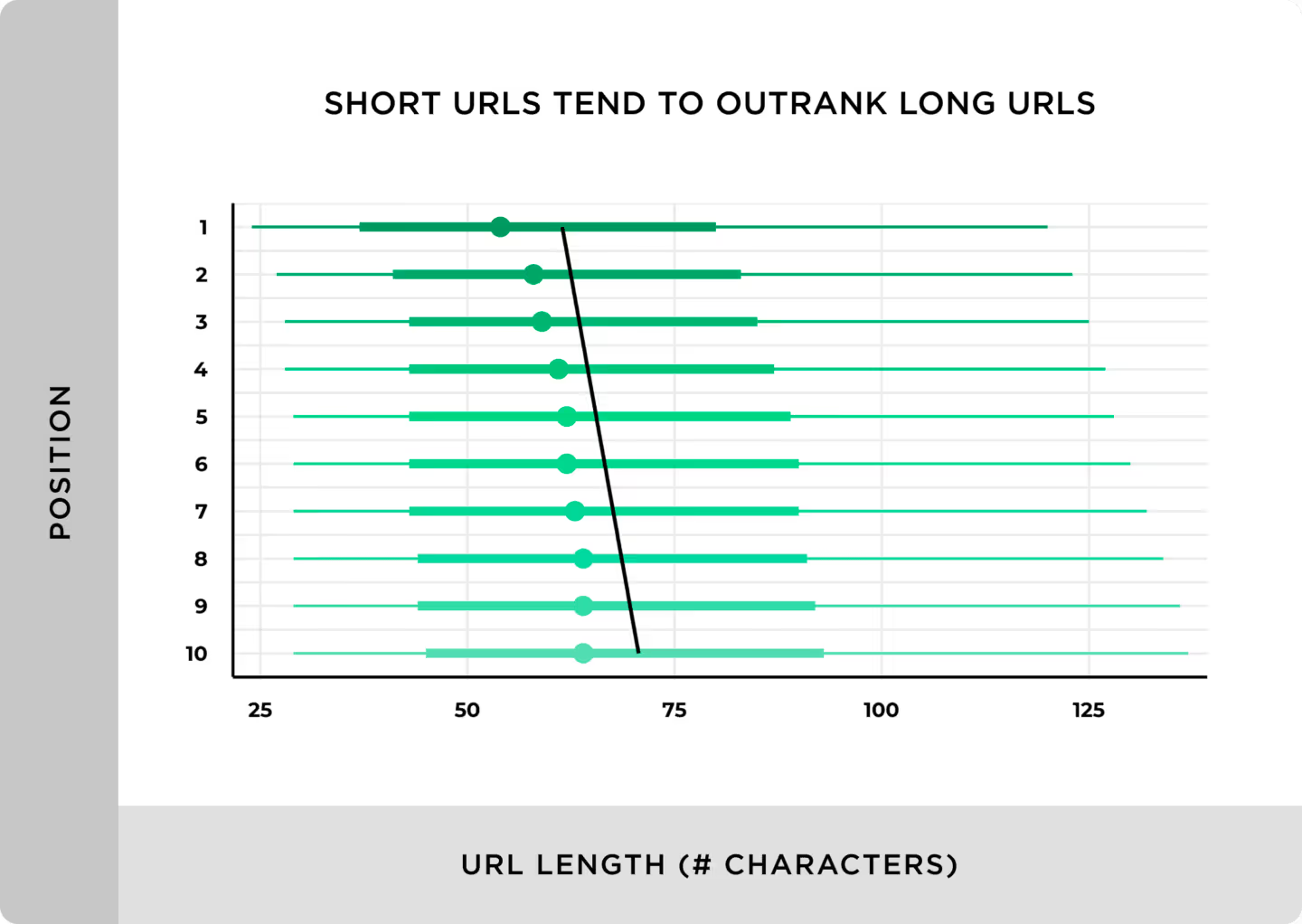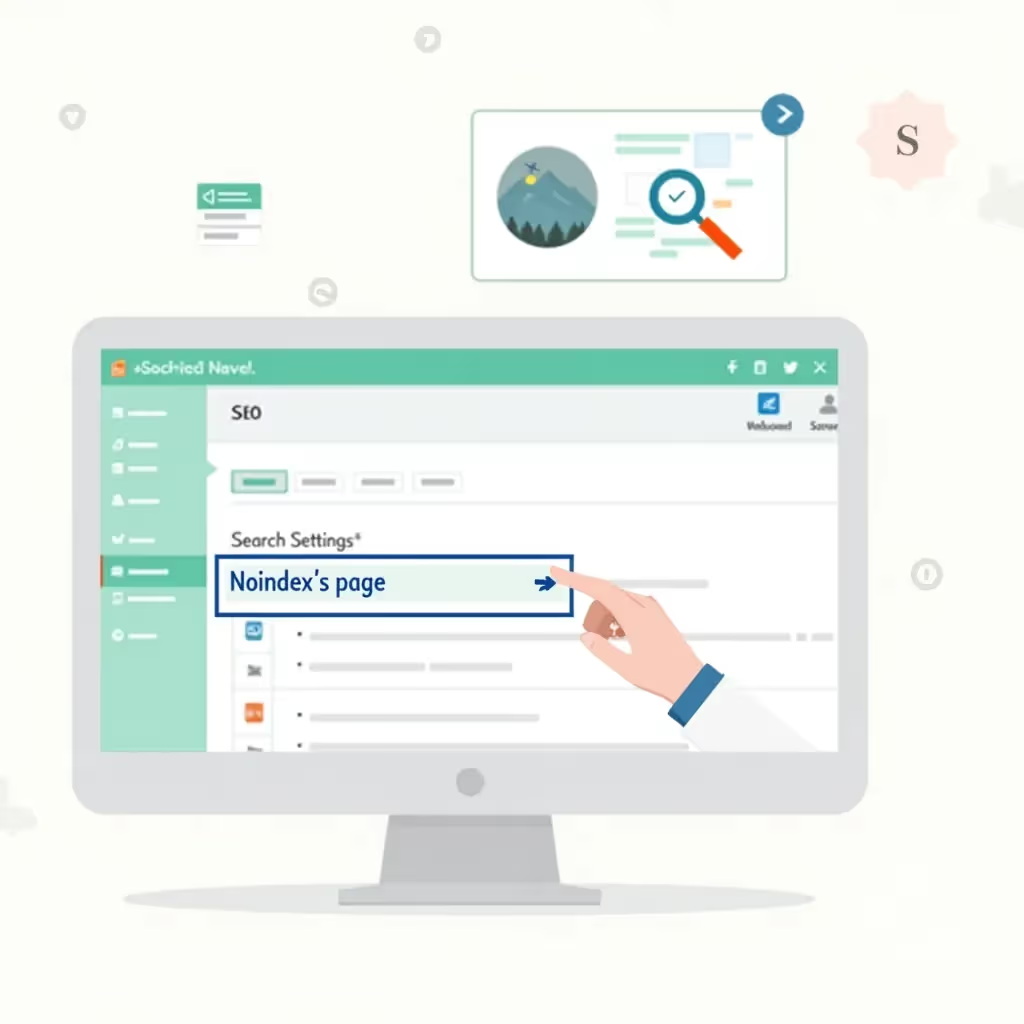A permalink is the URL of a published piece of online content. The article you’re currently reading has this permalink: https://www.positional.com/blog/what-is-a-permalink
A permalink, also called a permanent link, comprises a domain name and a slug, or the text in a URL that comes after the domain name. At Positional, our domain name is www.positional.com, and this blog post’s slug is “/blog/what-is-a-permalink.” Together, our domain name and the slug make up a permalink, or this page’s published URL that is accessible online.
A permalink should accurately describe the piece of content that exists at that URL. And in general, your permalinks should be clear, short, and free of unnecessary words or dates.
Permalinks are essential for search engine optimization (SEO), and there are some best practices to implement when you’re publishing pages or posts on your website. In this post, part of our series on SEO fundamentals, we’ll explain how your permalinks impact your SEO, highlight some best practices for creating permalinks, and provide some tips for avoiding common mistakes.
Are Permalinks Important for SEO?
Google has said contradictory things about the importance and impact of permalinks and URL structure on search engine rankings. In short, however, yes, your permalinks will impact your pages’ rankings.
In Google’s SEO Starter Guide, they make it clear that their search engine algorithm uses your permalinks as a way to understand what your website and its pages are about and how they’re interconnected. Google goes on to say that your permalinks are also important for your readers and website visitors in terms of helping them navigate your website. Google recommends using descriptive permalinks with words that explain what the webpage is about.
And according to Backlinko’s report on Google ranking factors, your published URLs play an important role in your pages’ search performance. Backlinko found that a URL’s length was the 51st most important ranking factor, suggesting that short and direct URLs are the best approach. Backlinko also found that including the primary keywords you’d like to rank for in your permalink is important for signaling to Google which keywords your page should rank for — the 55th most important ranking factor. However, in 2016, Google's John Mueller said that including keywords in your URL is only a small ranking factor.
When creating permalinks on your website, you should think critically about which keywords you’d like your pages to rank for in search engine results pages (SERPs). And you should create permalinks that are short and descriptive for readers and search engines as they navigate your website.
How to Use Permalinks Correctly | 8 Best Practices
Permalinks are simple in theory but can become more complex as the size of your website grows. There are some best practices to keep in mind and a few mistakes to avoid when creating and developing your permalink structure.
1. Use the Keyword in the Slug
For each piece of content you create, you should have a primary keyword in mind. You’ll want to incorporate that keyword into your permalink’s slug. This helps search engines and readers quickly identify what your webpage is about.
Most primary keywords are composed of between two and four words. These are the short and descriptive phrases that searchers use as a search query. There are a number of tools you can use to perform keyword research and to identify primary keywords, including Positional.
For an article about SEO best practices, I might use the slug “/seo-best-practices,” or for a piece of content about the best dog toys, I might use the slug “/best-dog-toys,” for example. You always want to separate words with a hyphen instead of running them together.
Of course, your post should rank for many broad and long-tail keywords. But it’s best to keep your permalinks focused on only the specific keyword that you care most about. You can certainly try to include longer-tail keywords in your URL, too, but you’ll need to be careful not to end up with an overly long URL — more on that below.
2. Keep Them Short
You should keep your permalinks short, typically shorter than 60 characters. Google’s Matt Cutts has said that using three to five words to describe your webpage is usually the right number of words. And anything beyond that, your permalink might end up looking funny and may not be as helpful for searchers or search engines.
Shorter URLs tend to rank better in search engines, too, according to an in-depth analysis from Backlinko.

Source: Backlinko
As mentioned above, you should include the primary keyword that you’d like your post to rank for in the URL.
3. Use a Consistent Structure
At Positional, all of our blog content exists on the /blog/ path: www.positional.com/blog/[insert-slug-here].
As you publish content on your website, you should use a consistent structure for all of your permalinks. For example, if you have a blog located on the /blog/ path, you should include all of your pieces of blog content on that same path. You may also have a product documentation section on your website, and in that case, you’ll want to keep all of that content on a /docs/ path, for instance.
In its search results, Google displays your path with breadcrumbs:

You don’t necessarily need to use “/blog/” or “/docs/” in your permalink, but if you do, make sure that you use it consistently across all of the similar content you publish.
4. Don’t Use Dates
Using dates in your title tags and H1s can be effective for increasing click-through rates and engagement: for example, using “2024” for an article about the best products or practices at this moment in time.
However, be careful not to include dates in your permalinks. Why? Well, as time goes on and you update previously published content, the last thing you’ll want is to have an outdated date in your permalink that no longer matches the date included in your title tag or H1.
Note that some content management systems include a publishing date by default in a page’s permalink: for example, “/blog/6/1/2024/[slug]”; you should turn this setting off for the reason outlined above.
5. Don’t Use Nearly Identical Permalinks
If you’ve got a number of very similar posts or pages on your website, you should work to use permalinks that are different from one another.
Don’t, for example, have one permalink with a slug like “/best-seo-tools” and another page with a slug like “/best-seo-tools-2.”
As mentioned above, your permalink helps to communicate how your website is structured and the purpose of each page. If you have a large number of very similar pages with nearly identical permalinks, you can run into keyword cannibalization issues as it becomes difficult for Google to know which of your pages it should rank for a given keyword.
6. Don’t Use Unnecessary Words
Say, for example, if we were writing a post titled “The Best SEO Tools to Consider Right Now” — we’d want to use a short and direct permalink that targeted our primary keyword, “best SEO tools.”
We wouldn’t, however, want to include unnecessary words like “to,” “right,” or “now,” as these words offer little additional value in terms of optimizing a URL for the primary keyword in view. And the longer a URL is, the less attractive it looks to a visitor in their browser.
If you have one or two longer-tail keywords in view, you can, of course, incorporate them into the permalink if it will feel natural for the reader and if it doesn’t push the permalink’s character count past 60 or so characters.
7. Don’t Use Extensions
If your content management system (CMS) has a setting that automatically adds an extension like .html, .php, or .exe to the end of your permalinks, you should turn this setting off and avoid it.
For example, you don’t want your permalinks to look like this: www.positional.com/blog/best-seo-tools.html.
In 2024, most CMSs avoid extensions by default, and if you end up migrating to a new platform, it’s unlikely that your new platform will support these extensions. As a result, you’ll end up needing to put a large number of redirects in place, which can disrupt search rankings.
8. Don’t Label Your Pages with Random IDs
Depending on which CMS you use, it may, by default, assign an ID to each of the posts or pages on your website. And if you forget to specify a custom permalink structure, it will automatically include the ID of your post as the slug.
For example, you don’t want your permalinks to look like this: www.positional.com/blog/POST472.
The above permalink isn’t very helpful for your readers and doesn’t tell search engines what your page is about. Take two minutes to create custom permalinks for each of your webpages. And if possible, adjust your permalink settings so that if you forget to specify the slug, the H1 will be pulled as the default (which is better than a random ID).
Changing Permalinks After Publishing
Changing your permalinks after publishing is a relatively straightforward process if you’re using a CMS like WordPress or Webflow.
However, when changing your permalinks, you should always remember to 301 redirect the previous version of your permalink over to the new version. A 301 redirect is an HTTP status code that communicates to your browser and to search engines that the URL has permanently changed locations.
Without a 301 redirect, a changed permalink will lead to the previously published URL 404-ing, or broken links, and this creates an unpleasant experience for website visitors and will have a negative impact on the your pages’ performance in search engines. In addition, by using a 301 redirect properly, you’ll pass along PageRank, or link equity, to the new version of the permalink, thus preserving the page authority.
Final Thoughts
Permalinks play an important role in any content marketing or SEO strategy. For both readers and search engines, clear and direct permalinks are very helpful.
Search engines use your permalinks and URL slugs to help understand what your website is about and, in part, which keywords your pages should rank for. You should incorporate your primary keywords into your slugs, but you should be careful to keep your permalinks below 60 characters.
If possible, it’s always a best practice to treat your permalinks as permanent and to write fantastic ones from the start. If you put a large number of 301 redirects in place, it’s easy to make mistakes, and you might lose some page and domain authority in the process.
At Positional, we’re building tools for content marketing and SEO teams. We offer a number of toolsets for everything from content optimization to technical SEO. If you’d like access to our private beta, you can sign up for our waiting list on our homepage.





